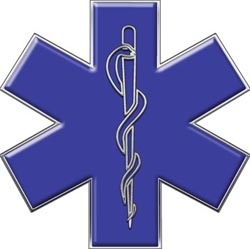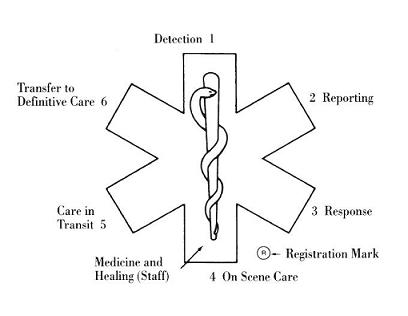
The Snake Emblem
The snake emblem is the Rod of Asclepius, widely used as the symbol of medical care. There are several theories as to it's development, and it is named for one of them. Asclepius was a figure in Greek mythology who possessed healing powers.
Symbolism
The six branches of the star are symbols of the six main tasks executed by rescuers all through the emergency chain:
- Detection - The first rescuers on the scene, usually untrained civilians or those involved in the incident, observe the scene, understand the problem, identify the dangers to themselves and the others, and take appropriate measures to ensure their safety on the scene (environmental, electricity, chemicals, radiations, etc.).
- Reporting - The call for professional help is made and dispatch is connected with the victims, providing emergency medical dispatch.
- Response - The first rescuers provide first aid and immediate care to the extent of their capabilities.
- On scene care - The EMS personnel arrive and provide immediate care to the extent of their capabilities on-scene.
- Care in Transit - The EMS personnel proceed to transfer the patient to a hospital via an ambulance or helicopter for specialized care. They provide medical care during the transportation.
- Transfer to Definitive Care - Appropriate specialized care is provided at the hospital.



